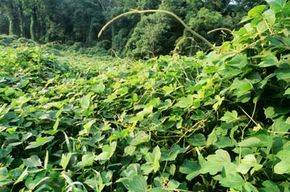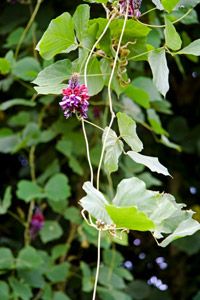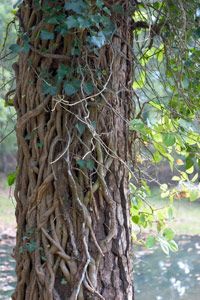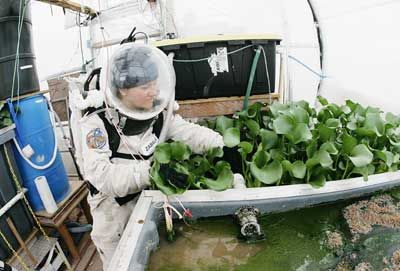Key Takeaways
- Kudzu can colonize and dominate diverse habitats, outcompeting native vegetation and altering ecosystem dynamics.
- Its capacity for rapid growth and reproduction makes kudzu challenging to control and manage.
- Kudzu poses significant challenges for controlling and managing vegetation in affected areas.
If you've ever traveled the highways or country roads of Georgia, Alabama or Mississippi, you've probably seen kudzu -- a rich blanket of leafy vines covering large areas of land, trees and abandoned buildings.
This creeping and climbing vine flourishes in the Southeast region of the U.S. because of the area's humid and hot climate. Kudzu thrives on warm summer temperatures that regularly top 80 degrees Fahrenheit (27 degrees Celsius) and mild winter temperatures that rarely dip below 40 degrees Fahrenheit (-4 degrees Celsius). What's more, the Southeast gets roughly 40 inches (1 meter) of rainfall a year, setting up a proverbial paradise for this perennial plant. As of 2008, kudzu covers more than 7 million acres of the U.S., and you can even spot it as far north as New Jersey and Illinois, as far west as Oregon and as far south as the Florida Keys [source: Southeast Exotic Pest Plant Council].
Advertisement
Kudzu seems to be ubiquitous in the U.S., but this unusual plant isn't a homegrown fellow. It's actually native to Asia. In fact, writings dating back to A.D. 100 trace this hardy member of the legume family to China, Japan and India. It's been used there for centuries as a homeopathic remedy and for other purposes that we'll explore later. Although kudzu grows like a weed throughout the U.S., it's nearly extinct in some parts of China due to deforestation and its widespread popularity as a remedy for a host of minor maladies.
Considering kudzu's origin and reputation, you may be wondering how the plant got to the U.S. in the first place. It made its American debut in 1876 at the Philadelphia Centennial Exposition, where it was touted as an ornamental vine meant to provide shade. Several decades later, the Soil Conservation Service promoted kudzu cultivation as a way to control soil erosion caused by deforestation in the South. The agency paid farmers $8 an acre to plant kudzu in the 1930s and '40s [source: Britton].
Kudzu grows quickly and easily and many swear by its healing virtue, but some landowners in the Southeastern part of the U.S. aren't happy with it living in their backyards. Before we find out why, we need to learn more about how kudzu and how it grows.
Advertisement




